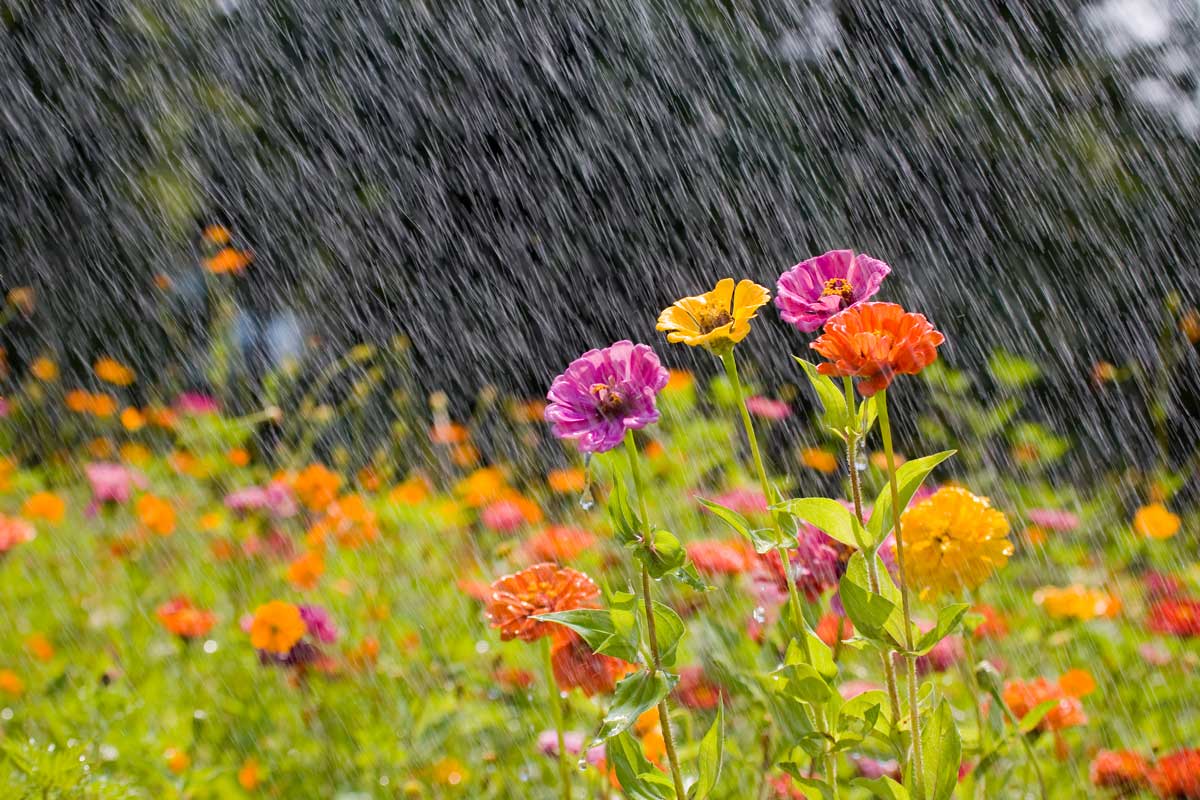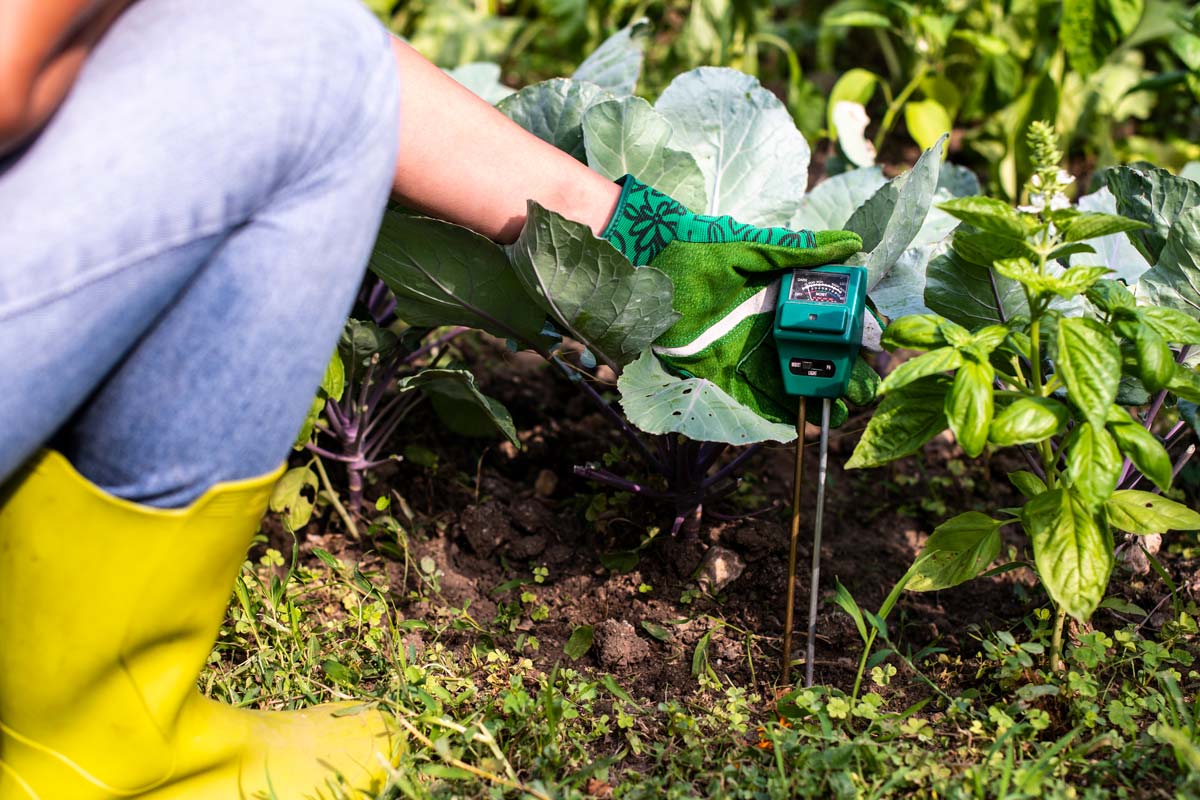Watering Triage: What to Water First and What Can Wait
During those hot, dry stretches, here are some tips to help you prioritize your watering duties.
Soil moisture is always a critical ingredient of good plant growth, but it’s especially important – and often tricky – during a hot, dry summer.
Although it’s possible to overwater enough to kill a plant with soggy soil in summer, much more common is lack of water.
Without enough moisture in the root zone, plants first suffer stresses that include wilting, leaf damage, lack of flowering and fruiting, and increased likelihood of bug damage.
If the dryness continues, the damage progresses to leaf and needle drop and branch dieback.
In the worst case, the whole plant dies.
The gardener’s goal is to make sure the soil is consistently damp all around and to just under the plants’ root systems – especially with new and young plants.
Read more on what to water first and what can wait.

Summer downpours can be isolated and sometimes don't drop as much rain in the garden as you think. Jurgute / iStock / Getty Images Plus
Rain is your best summer ally, but what really matters is how much fell in your yard.
Summer storms can be spotty. Those sudden summer downpours sometimes don’t drop as much rain as you think, and sometimes more of it runs off than soaks in.
One of the biggest fakeouts is near big trees. Besides blocking rain from reaching the soil surface in the first place, big trees have enormous root systems that quickly outcompete shrubs and flowers for whatever moisture makes it into the ground.
Another curveball is how isolated summer storms can be. It’s very possible for one area to get a soil-moistening dumping while the next neighborhood gets nothing. So even if you’re following local rainfall reports, it’s not always helpful to know how much the official measuring station got.

Testing garden soil moisture with a moisture meter. Deyangeorgiev / iStock / Getty Images Plus
Rather than relying on broader reports, a better strategy for gardeners is to place a rain gauge (or gauges) in their own yard – or to invest in a back-yard weather-monitoring system.
Units are available online and in many garden centers and home stores that not only measure rainfall but also temperature, wind speed, and humidity. Some even beam readings wirelessly to phones or indoor receiving units.
Beyond your own monitoring, a non-profit, community-based organization of citizen scientists supplies hyper-local, daily precipitation reports. It’s called the Community Collaborative Rain, Hail, and Snow Network (CoCoRaHS, for short).
Those volunteers measure rain in their own yards and post it every day on the CoCoRaHS website. The network has more than 20,000 contributors nationwide, and most U.S. counties have a handful or more of them.
To determine whether a particular part of your yard needs water, use that most valuable of moisture-monitoring tools – your index finger. Just pull back the mulch and stick your finger in the soil surface an inch or two to determine if the soil is moist or bone-dry.
You could also use a stick or trowel to check a little deeper into the root-zone area, or you could invest a few dollars in a moisture meter – also available online and in many garden/home stores.
Once you know the soil-moisture situation, it’s time to decide whether the plants there need water or not. Here’s a plant-type-by-plant-type rundown:
These are shallow-rooted and benefit from frequent watering, especially in the first four to six weeks after being planted. Water them every two to three days when rain doesn’t happen – or whenever the top few inches of soil is dry when you insert your index finger.
These dry out fast and likely will need water every day – maybe even twice a day in small pots and hot, dry weather. At least check them daily. Soak until water comes out the drainage holes.
New perennials are generally larger and deeper-rooted than annuals and so need a little less water in the first few weeks in the ground. Two soakings a week are usually plenty for the first four to six weeks after planting.
Most established perennials and groundcovers need little to no water. The exception is in extended hot, dry spells. In that case, a weekly soaking is helpful.
Perennial bulbous plants such as lilies and crocosmia (ones that you’re not lifting each fall for winter storage) usually don’t need water, unless it’s unusually hot and dry. These function like perennials.
Cannas, callas, gladioli, caladiums, dahlias, and other non-winter-hardy bulbs that are planted each spring are a different story. Their roots are still developing and appreciate a soaking about twice a week – similar to what you’d give a newly planted perennial.
No need to water spring bulb beds. Once tulips, daffodils, hyacinths, and such go dormant for the summer, they don’t need or want water.
These survive well with little water, but they perform and flower better in consistently damp soil. Your goal can be your guide here. If you’re growing shrub roses and/or trying to minimize maintenance, skip watering them, or soak occasionally only in a drought.
If you’re trying to maximize rose performance, soak the ground two to three times a week whenever it’s not raining.
Soak new shrubs and trees two to three times a week for the first two months, close to the rootball where the roots are. Then soak once or twice a week for the rest of the first season.
A rough guide on quantity: one to two gallons of water for every inch of trunk diameter at shoulder height for trees, and three to five gallons of water per watering for shrubs.
Trees and shrubs that have been in the ground for at least three or four years usually won’t need water, unless it’s been hot and dry for weeks. In that case, soak deeply weekly, not often but shallow.
Read about eight plant-watering myths to avoid.